Resource retrieval
Get the pre-trained net:
NetModel parameters
This model consists of a family of individual nets, each identified by a specific parameter combination. Inspect the available parameters:
Pick a non-default net by specifying the parameters:
Pick a non-default uninitialized net:
Basic usage
Classify an image:
The prediction is an Entity object, which can be queried:
Get a list of available properties of the predicted Entity:
Obtain the probabilities of the 10 most likely entities predicted by the net:
An object outside the list of the ImageNet classes will be misidentified:
Obtain the list of names of all available classes:
Feature extraction
Remove the last layers of the trained net so that the net produces a vector representation of an image:
Get a set of images:
Visualize the features of a set of images:
Visualize convolutional weights
Extract the weights of the first convolutional layer in the trained net:
Show the dimensions of the weights:
Visualize the weights as a list of 32 images of size 3x3:
Transfer learning
Use the pre-trained model to build a classifier for telling apart images of motorcycles and bicycles. Create a test set and a training set:
Remove the last layers from the pre-trained net:
Create a new net composed of the pre-trained net followed by a linear layer and a softmax layer:
Train on the dataset, freezing all the weights except for those in the "linearNew" layer (use TargetDevice -> "GPU" for training on a GPU):
Perfect accuracy is obtained on the test set:
Net information
Inspect the number of parameters of all arrays in the net:
Obtain the total number of parameters:
Obtain the layer type counts:
Export to MXNet
Export the net into a format that can be opened in MXNet:
Export also creates a net.params file containing parameters:
Get the size of the parameter file:
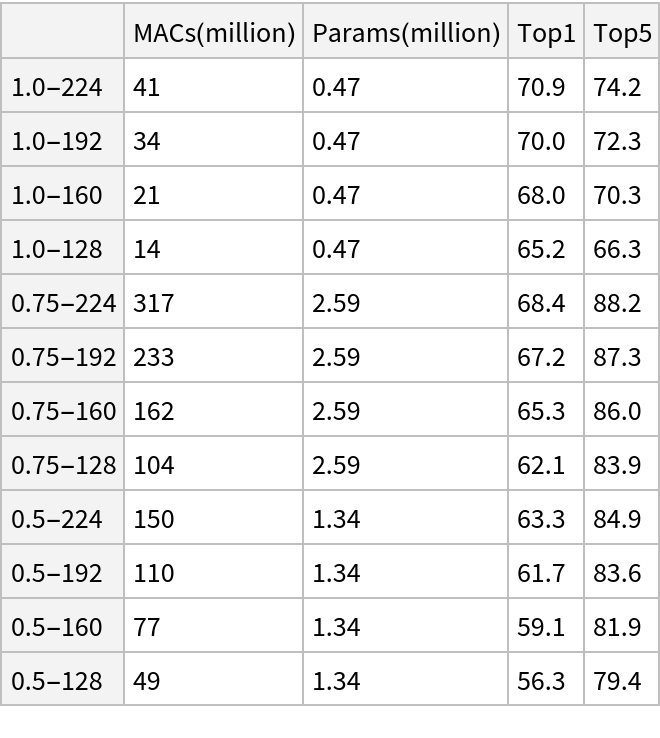

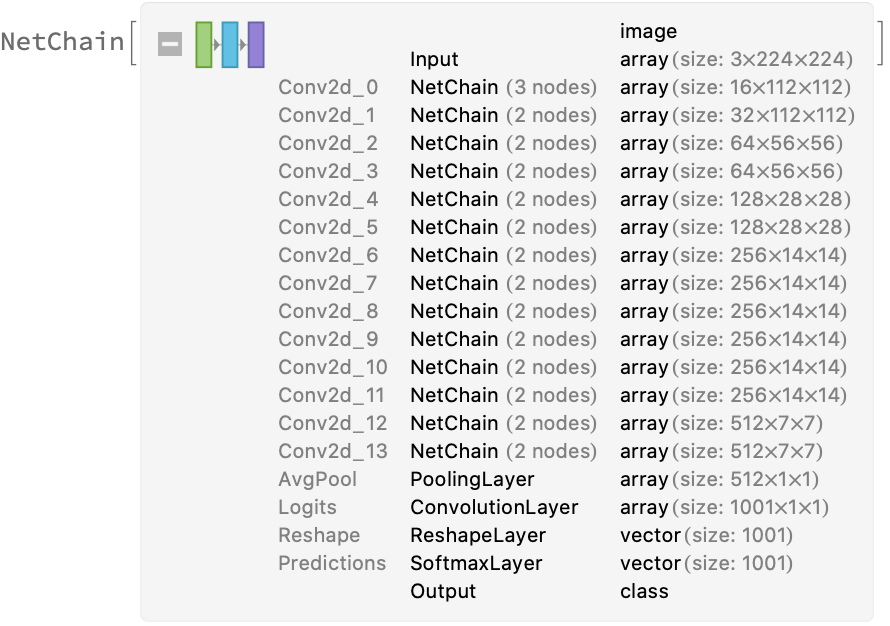
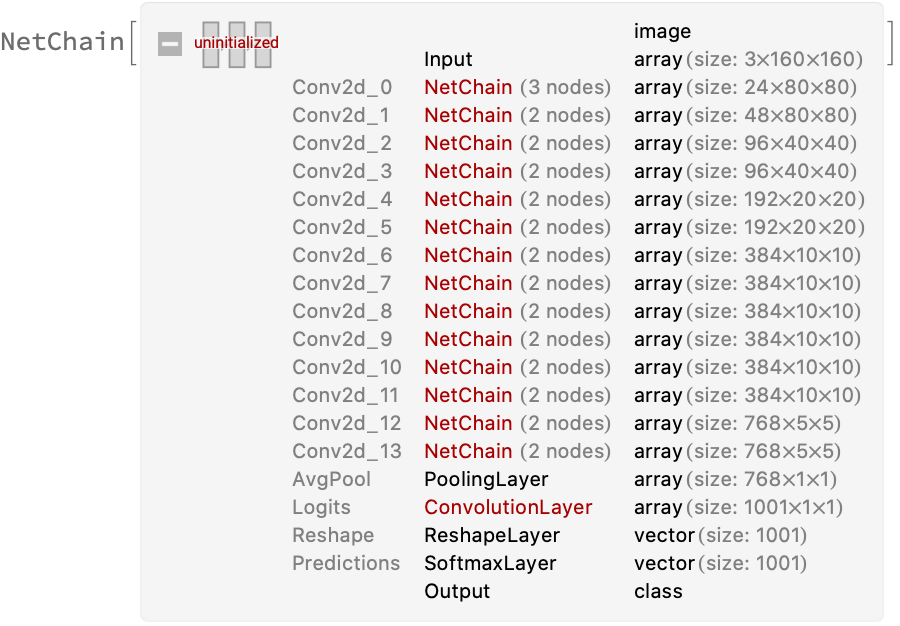
![(* Evaluate this cell to get the example input *) CloudGet["https://www.wolframcloud.com/obj/8f1cf22d-d8f5-43bc-9ded-4c73ca00d91a"]](https://www.wolframcloud.com/obj/resourcesystem/images/f41/f4158c6d-37cb-4015-a6be-aa83db44e924/37351bb62f246699.png)

![(* Evaluate this cell to get the example input *) CloudGet["https://www.wolframcloud.com/obj/e6f9b841-5d98-4472-93cc-e2e997821d65"]](https://www.wolframcloud.com/obj/resourcesystem/images/f41/f4158c6d-37cb-4015-a6be-aa83db44e924/7933d77e54c6b9fa.png)

![(* Evaluate this cell to get the example input *) CloudGet["https://www.wolframcloud.com/obj/87296fbf-0188-4036-a19e-65fcfbe5345f"]](https://www.wolframcloud.com/obj/resourcesystem/images/f41/f4158c6d-37cb-4015-a6be-aa83db44e924/23f9ef0a4d86f424.png)
![EntityValue[
NetExtract[
NetModel["MobileNet V1 Trained on ImageNet Competition Data"], "Output"][["Labels"]], "Name"]](https://www.wolframcloud.com/obj/resourcesystem/images/f41/f4158c6d-37cb-4015-a6be-aa83db44e924/52b81c8fe53f3a80.png)

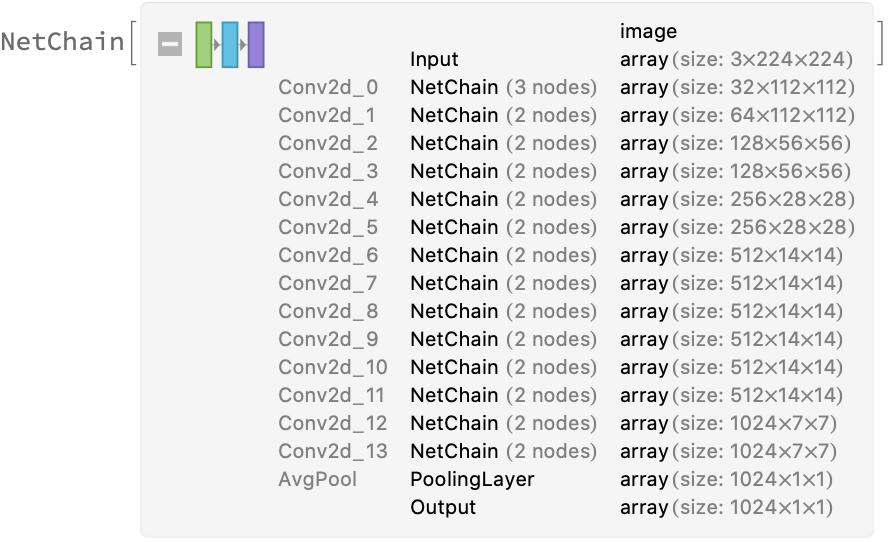
![(* Evaluate this cell to get the example input *) CloudGet["https://www.wolframcloud.com/obj/72a29655-8d7f-431e-ac71-0478bad3c941"]](https://www.wolframcloud.com/obj/resourcesystem/images/f41/f4158c6d-37cb-4015-a6be-aa83db44e924/5701593fed9d7839.png)
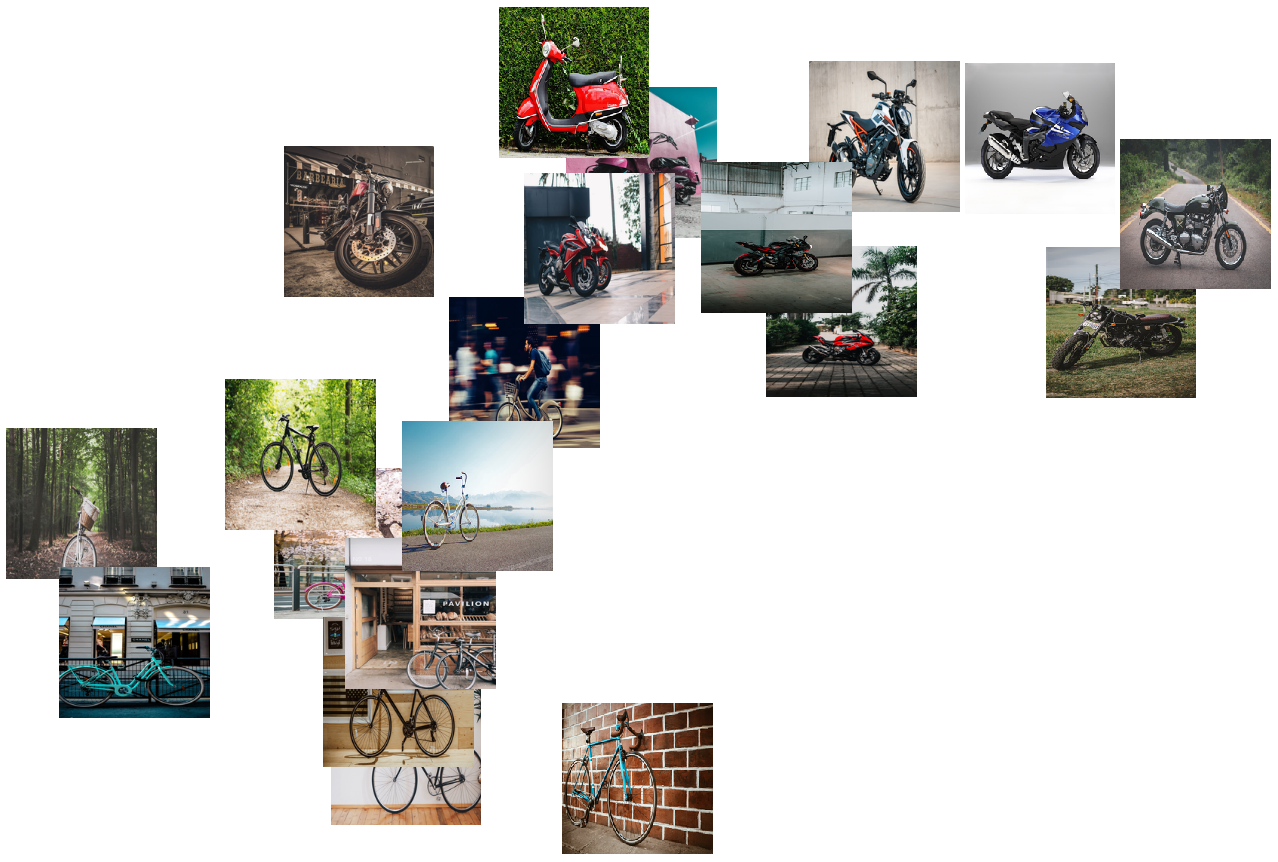

![(* Evaluate this cell to get the example input *) CloudGet["https://www.wolframcloud.com/obj/a7efaa20-2ddf-4034-88b1-6c7c4dd16ee6"]](https://www.wolframcloud.com/obj/resourcesystem/images/f41/f4158c6d-37cb-4015-a6be-aa83db44e924/6525599610a1b7eb.png)
![(* Evaluate this cell to get the example input *) CloudGet["https://www.wolframcloud.com/obj/d0926ec5-2f55-4d38-b120-e9c9d7eb614e"]](https://www.wolframcloud.com/obj/resourcesystem/images/f41/f4158c6d-37cb-4015-a6be-aa83db44e924/1ffdb7ebfcfa2e26.png)

![newNet = NetChain[<|"pretrainedNet" -> tempNet, "linearNew" -> LinearLayer[], "softmax" -> SoftmaxLayer[]|>, "Output" -> NetDecoder[{"Class", {"bicycle", "motorcycle"}}]]](https://www.wolframcloud.com/obj/resourcesystem/images/f41/f4158c6d-37cb-4015-a6be-aa83db44e924/761770eb9f71631b.png)
![trainedNet = NetTrain[newNet, trainSet, Method -> "RMSProp", LearningRateMultipliers -> {"linearNew" -> 1, _ -> 0.0}, ValidationSet -> Scaled[0.1], TrainingStoppingCriterion -> <|"Criterion" -> "Loss", "RelativeChange" -> 0.0001|>]](https://www.wolframcloud.com/obj/resourcesystem/images/f41/f4158c6d-37cb-4015-a6be-aa83db44e924/309e9e6804a45435.png)
